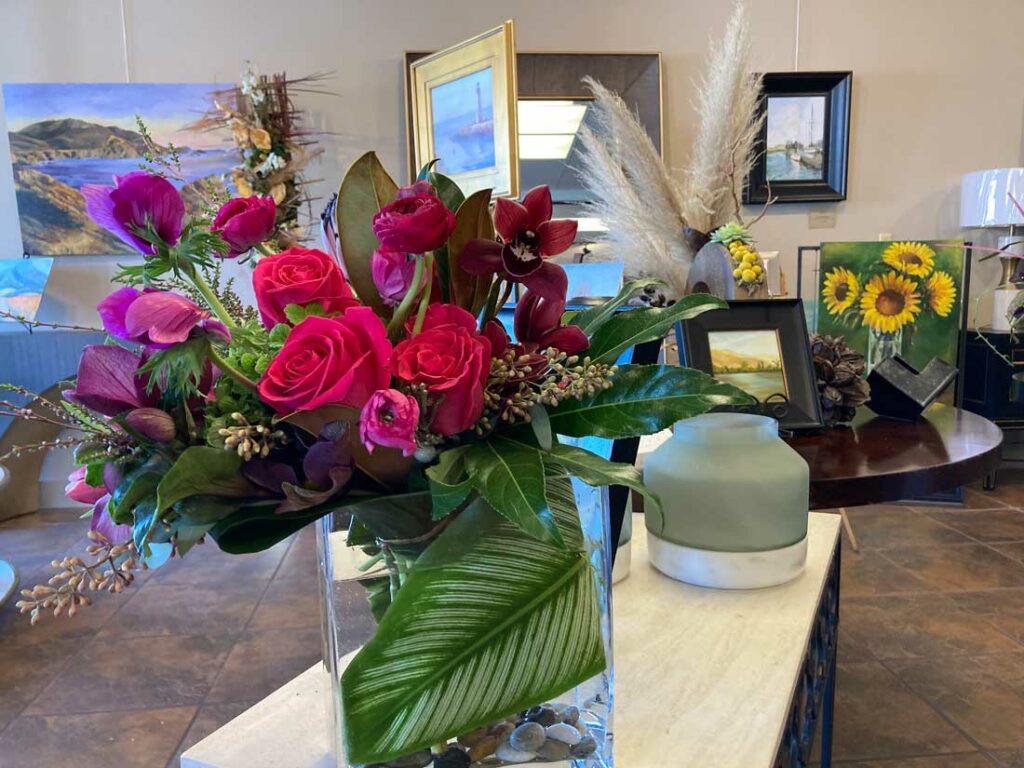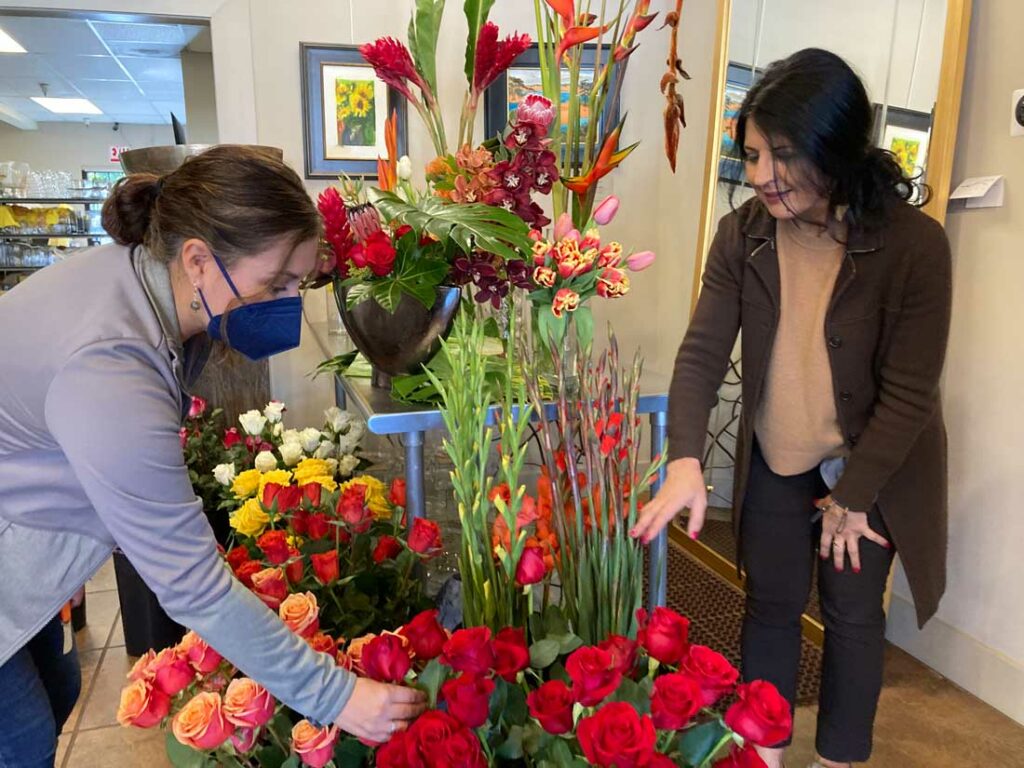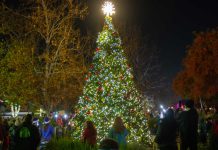
Before the Covid-19 pandemic started, Diana Rasta was hoping to expand her Morgan Hill floral and interior design store by opening another location in the South Bay. And even though the public health emergency has halted those plans, Rasta’s business has been booming.
Rasta is the owner of Stems Floral & Interior Statements, which she opened in 2006 at its Vineyard Town Center location. More than just a flower shop, Stems caters to high-end clients eager to go all-out with decor for their weddings or events, as well as artists and interior designers seeking intricate floral arrangements to accentuate their homes or portfolios.
“We are beating our 2019 sales,” Rasta said. “I think my customers are not only supportive but not hurting. Flowers are something that they must have.”
Although Rasta and her staff are booked for weddings for the rest of the year, she still has time to take orders for Valentine’s Day—perhaps the biggest day of the year nationwide for florists and flower shops.
“We wish everyone a happy Valentine’s Day,” Rasta said. “Share the love and spoil someone.”
On Friday of last week—more than a week before Valentine’s Day—Rasta and Stems employee Brenda Syslo were sorting through buckets of freshly cut multi-colored long-stem roses, ginger, pin cushions, Monstera leaves and other Hawaiian exotic flowers. Rasta had picked many of the flowers herself that morning from her supplier in San Francisco.
The Morgan Hill shop is expertly decorated with handmade arrangements highlighting original sculptures, paintings and other art pieces for sale. Rasta likes to feature American artists, including several works by Clayton Thiel.
Rasta said her son has helped with Stems’ art selection, focusing on pieces that have “meaning and a story behind it.”
Before the pandemic, Rasta was planning to open another art and design store in Palo Alto, on the request of some of her customers. However, those plans were put on hold.
Rasta’s approach to floral design is informed by her decades of education, study, practice and experience in the field. She studied design at Mission College and San Francisco City College, and has persistently continued her education of various styles of floral design over the years.
She also enjoys teaching others about her craft, which—like any artistic effort—starts with basic foundational knowledge.
“Before you can find your own floral style, you need to be grounded in many of the fundamentals such as the structure, the mechanics and the method in order to be creative,” Rasta said.
She added, “In my opinion, good floral design should be immediately attractive and appear effortless and natural.”
Rasta said her preferred floral design style is European, which she describes as “more wild” with branches, leaves and other types of foliage in addition to colorful flowers.
While Rasta and Stems seem to have secured a solid reputation and loyal clientele to keep the store thriving, other brick-and-mortar flower shops face some uncertainty about this coming Valentine’s Day, which is Feb. 14.

Valentine’s Day customers are historically procrastinating men, who typically wait to purchase floral arrangements for their significant other on the day of. But with the holiday falling on a Monday after the Super Bowl, planning this year will be a crapshoot for florists.
The pandemic has also taken a toll on supplies throughout the floristry industry. According to CBS News, flower prices have risen because some producers have shut down. The report said that it has forced New York City florist Banchet Jaigla to raise prices by about 20 percent.
Still, Valentine’s Day spending is expected to reach $23.9 billion this year, up from $21.8 billion in 2021 and the second-highest year on record, according to the annual survey released Jan. 31 by the National Retail Federation and Prosper Insights and Analytics.
According to the survey, shoppers expect to spend an average of $175.41 per person on Valentine’s Day gifts, up from $164.76 in 2021.
The industry is likely to gain more steam this year as events continue to return from pandemic restrictions. The Wedding Report, a group that analyzes the wedding industry, predicts there will be 2.5 million weddings in the United States this year, the highest number since 1984.
Erik Chalhoub and Juan Reyes contributed to this report.








